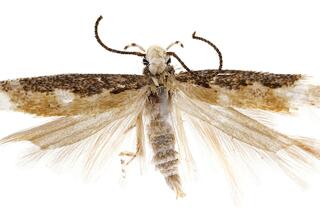When Scientists Get Silly, Chemical Names Do Too
- Share via
Parents aren’t to blame for all the silly names in the world--the absurdity crosses species lines. Imagine a diminutive crustacean having to live up to a name like Gammaracanthuskytodermogammarus loricatobaicalensis. Or the indignity, for a beetle, of a moniker like Agra vation, Agra phobia or Agra cadabra.
Chemicals get silly names too--and we are fortunate that, a few years back, an enterprising Brit decided to list as many as he could find.
Paul May, a lecturer in chemistry at Bristol University, already had a serious, educational Web site that features a molecule-of-the-month. (We’re guessing that Bristol isn’t too hopping.)
Then, one day at the pub, an organic chemist friend suggested a similar site with only silly names.
“I said, such as what?” recalls May--and his pal volunteered a bona fide chemical with a name too vulgar for us to print. Over beers, the two thought of several more--megaphone, buckminster fullerene, adamantane--and the site was born.
To May’s delight, the word spread fast.
“I thought it was going to be a little Web site that a few friends could laugh about privately,” he says. “But everybody seemed to like it, and everyone seemed to know some molecule. People all over started e-mailing me.”
May doesn’t list every name he gets sent--some are a bit too lame, he says. (Vulgarity, on the other hand, is an asset.)
Here are some of the more G-rated among his collection: munchnone, moronic acid, rhamnose, windowpane, constipatic acid, penguinone, dogcollarane, snoutene, rudolphomycin, Hi-O-silver and, my personal favorite: Bis(pinacolato)diboron. (Anyone for a cocktail?)
Oftentimes, says May, the chemicals got their daft names because of their shape, because they were named after the discoverer or named after the plant they were derived from.
A lot of the chemicals are of medical significance, and May posts little tidbits about what the substances are and how they came by their names. Such as:
* Godnose. This is actually an early, tongue-in-cheek name for Vitamin C. The vitamin’s discoverer, Albert Szent-Gyorgi, was racking his brains for a name and called it godnose because he had no idea of its chemical structure. The name was disallowed, but Szent-Gyorgi did OK: He won a Nobel prize for his discovery.
* Antipain. You’d think this molecule, known as a protease inhibitor, would be soothing, but in fact it is toxic, causing itching and--yes, pain.
* Putrescine. This delightful-sounding chemical is produced in rotting flesh as a breakdown product of amino acids, the little chemicals that proteins are made of. Together with another chemical, cadaverine, it’s behind much of the odor of rotting flesh.
* Spamol. May points out that this is not Monty Python’s favorite molecule, but an anti-spasmodic.
* Domperidone. Not a champagne, but an anti-vomiting drug.
* Trunkamide. Its 3-D structure looks vaguely (very vaguely) like an elephant’s head. Extracted from a sea squirt, it has anti-tumor activity.
* BCNU (be-seein’ you). A drug that--while toxic--is useful for the treatment of brain cancer.
To check out May’s more serious, molecule-of-the-month Web site (which we find very enjoyable, despite our earlier rib) go to www.bris.ac.uk/Depts/Chemistry/MOTM/motm.htm.
This month’s molecule: the amino acid tryptophan.
But if your thirst for silly molecules is not sated, head straight to www.bris.ac.uk/Depts/Chemistry/MOTM/silly/sillymols.htm.
Complaints about lewdness? Address them to the chemists.
*
If you have an idea for a Booster Shots topic, write or e-mail Rosie Mestel at the Los Angeles Times, 202 W. 1st. St., Los Angeles, CA 90012, rosie.mestel@latimes.com.






